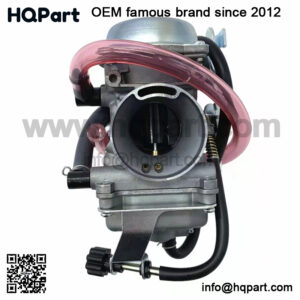The carburetor combines fuel and air in the engine by using an intake vacuum supply. The air is pulled down through to the carburetor by the intake vacuum while fuel is siphoned from the carburetor’s fuel bowl. From here, the fuel and air form a combustible mixture that powers the engine. At high engine speeds, fuel is pulled through the metering jets into the narrowest part of the carburetor throat. It then travels down to the intake manifold where it is burned to produce power in the cylinders.
If there is too much fuel, the engine can flood, run poorly, have bad fuel economy, or become very smoky while running.The carburetor plays an important part in keeping your vehicle in smooth operating condition.
In addition, different parts can fail within the carburetor. For example, if the power valve inside the carburetor becomes bad, a misfire in the engine will occur.
Flooding is another problem with the carburetor that can be a dangerous situation. This happens when dirt gets into the needle valve and prevents the valve from closing. Fuel keeps flowing and spills into the carburetor throat. A flooded engine will not start, and is a fire hazard if fuel leaks onto the hot engine.
Since the carburetor can become damaged or clogged over time, you should be aware of the symptoms that indicate the carburetor needs to be replaced.Signs that indicate your carburetor needs to be replaced include:
- Poor fuel economy
- The vehicle idles too fast
- Your car floods when you try to start it
- The vehicle has a rough idle
- Your car stalls at low speeds
- The vehicle hesitates under load
“Keyword”
“how does carburetor works in car”
“how does carburetor works”
“how does a carburetor idle circuit work”
“how carburetor engine works”

